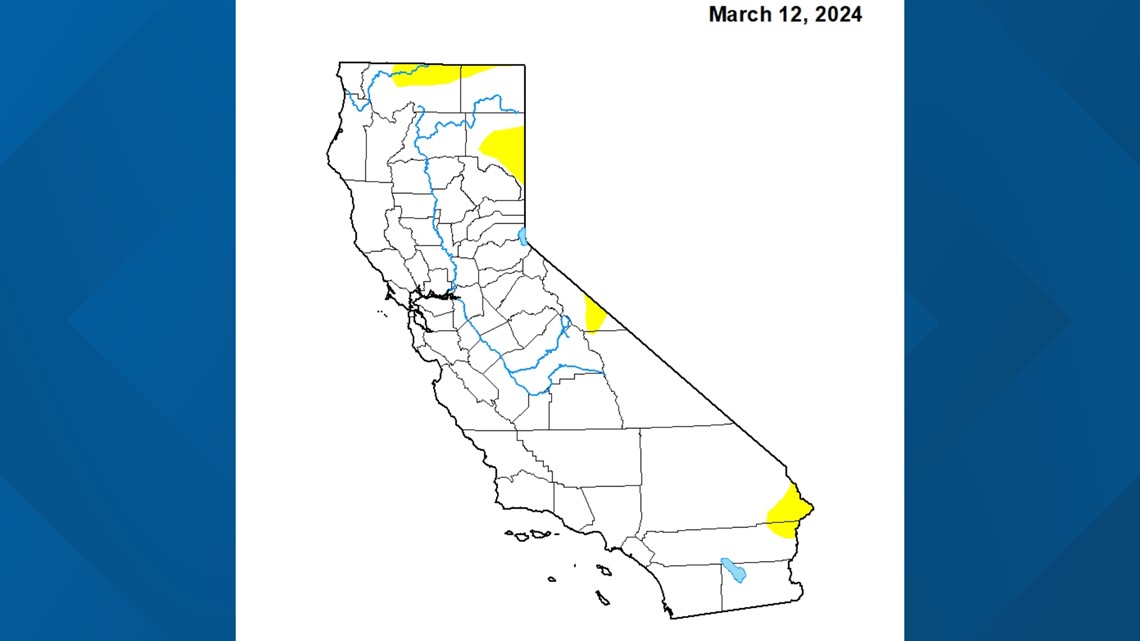SACRAMENTO, Calif —
Although the wet season got off to a slow start, a persistent El Niño-like weather pattern since the beginning of January allowed the Sierra snowpack to catch up to normal.
The statewide percent of the April 1 average, the date when the snowpack typically peaks, is at 98% of average. Broken down further, the Northern Sierra, which supplies snowmelt to the two most vital reservoirs in the state (Shasta and Oroville), is at 112% of the April 1 average.
Since the state's reservoirs remained well above average through the dry summer and autumn months thanks to the record wet winter last year, they will continue to remain above average and almost all of California will remain drought free for another year.


After the melt-off period last spring and early summer, Lake Shasta — the keystone of the Central Valley Project — was at 98% capacity, Oroville was at 100% capacity and Folsom Lake was nearly full at 95% capacity. These bodies of water were quite parched heading into the winter due to the three years of drought preceding the past winter's deluge and ranged from 25-32% capacity before the atmospheric river events rolled in.
As of Mar. 20, a day after the first day of spring, Shasta is at 87% of capacity (114% of historical average), Oroville is at 85% (126% of historical average) and Folsom is 66% full (114% of historical average).
Lake Trinity, located to the northwest of Lake Shasta, is the most full it's been since spring 2020.
Due to Folsom Lake being smaller than the other bodies of water listed, it fluctuates more in terms of capacity and will return to nearly full capacity by the late spring/early summer timeframe.
More wet weather on the way Friday will add to the snowpack that will eventually make its way into the reservoirs that supply Californians with water.
WATCH ALSO: Chance of rain anticipated this weekend

















